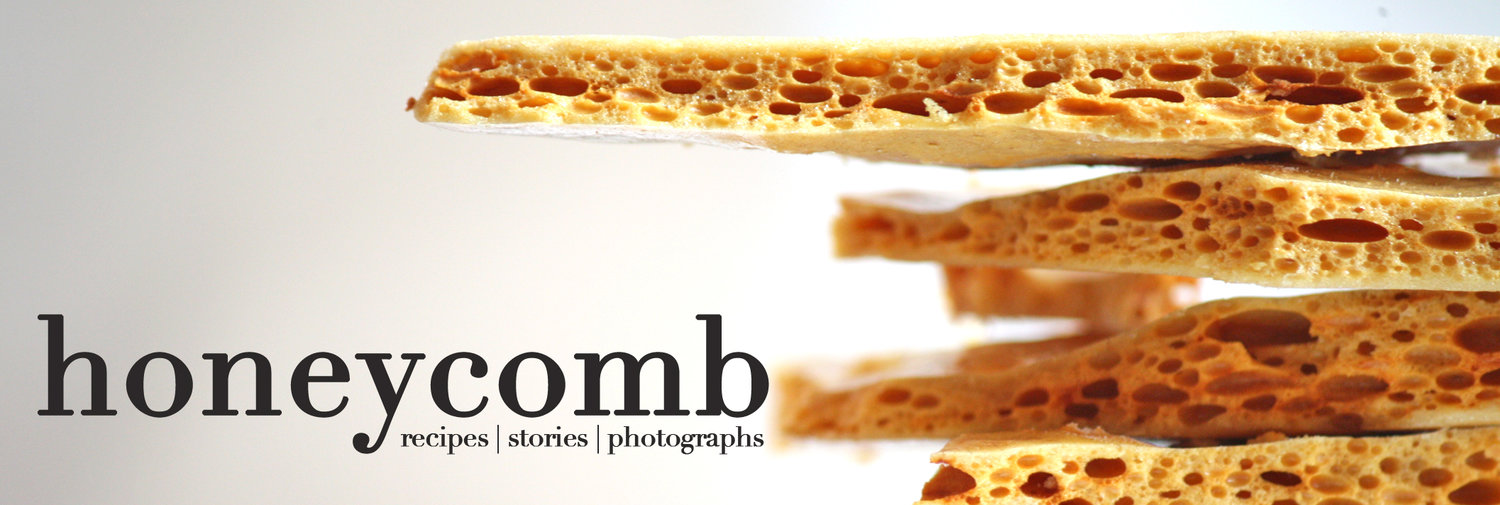Goat Cheese: A Love Story

My love affair with goat cheese began at an early age, much earlier than people should really be developing tastes for things that are gamey, funky, and just plain goaty…but it still happened. If it could be considered a condiment, it might be my second favorite, behind maple syrup, and I am partial to eating it on toast with cherry jam for breakfast probably more often than I really ought to.


When I was home for Easter my mom and I took a short drive to Georges Mill Cheese, a start-up goat cheese business in my hometown, that has quickly been making a name for itself. We picked up some bloomy rind goat cheese and some chevre and while we were there were able to see the young goats. They ranged in age from about 2 weeks to 24 hours old. The newborns took a while to get to us because they were too scared to come down the hill to where we were standing and when they finally did I could see just how wobbly they still were on their little legs.



And the cheese was as amazing as the baby goats were adorable. The chevre was really mild and buttery and the aged goat cheese had a good tangy funk to it, in the best way possible. I polished it off in about 2 days and was left craving more and more goat cheese. I went for yet another recipe from River Cottage Veg, this time a Kale Farrotto (risotto made with farro) with soft-rind goat cheese to fulfill that craving. I’ve really come to like these risottos made out of grains instead of rice. The grains give a nuttier flavor and hold their shape much better so it has a little more chew rather than turning into mush. I’ve also tried this grain method before with barley with good results. This risotto, however, gets a lot of richness from leeks sautéed in loads of butter and a good dose of pecorino cheese, which lends a creaminess that grain risottos have and harder time achieving. Rounds of the soft-rind goat cheese sit overtop and turn slightly melty from the heat. All-in-all it’s rich, warming, tangy and creamy, perfect for these rainy, cool spring days.

Kale “Farrotto” with Goat Cheese
Serves 4
Adapted from Hugh Fearnley Whittingstall’s River Cottage Veg
If you can’t find pearled farro, pearled spelt or barley would be suitable substitutes. This recipe is great for using up some new spring greens too; Swiss chard would be a great alternative for the kale.
Ingredients
1 quart vegetable stock
3½ Tbs butter
2 Tbs olive oil
2 large shallots, finely chopped
1 clove garlic, minced
a few sprigs of thyme, leaves chopped
2 medium leeks, trimmed to the bottom lighter parts only
4 oz. kale, torn in to medium-sized pieces
10 oz. pearled farro
½ cup dry white wine
2 oz. pecorino romano, grated, plus more for serving
a soft-rind goat cheese round (I used one with a vegetable ash coating)
salt and pepper, to taste
Heat the stock over medium until it comes to a low simmer. Set aside, covered, to keep warm. Cut your leeks in half and cut each half on a diagonal into ½ inch wide strips. Rinse well under cold water and let drain in a colander. Heat half the butter and 1 Tbs of the oil in a small saucepan over medium-low heat. Add the leeks and a bit of salt and gently cook, stirring occasionally, until tender with just a bit of bite left, 5-7 minutes.
Transfer to a bowl and set aside. In the same pan, add a little bit of water and the kale. Cook over medium, covered, until the kale is wilted, 3 minutes. Drain and also set aside.
In a large saucepan, heat the remaining butter and oil over medium. Add the shallots, garlic, thyme, and a good pinch of salt and cook gently for about 10 minutes until soft and very lightly browned. Stir in the farro and cook, stirring for another minute or two. Add the wine and cook until absorbed.
Add the stock, a quarter at a time, and stir often, adding more stock as it gets absorbed completely. This should take about 25 minutes. Once the stock is used up, taste the farro. If it’s still a bit too chewy for you add about another ½ cup to a cup of water and keep stirring until absorbed. Stir in the leeks and kale and cook for a few more minutes. Add in the grated pecorino and some cracked black pepper and mix throughout. Taste and add more salt if needed.
To serve, dollop the risotto into a bowl. Top with a drizzle of olive oil, more grated cheese, a few rounds of your soft-rind goat cheese, and more salt and pepper, if desired.
